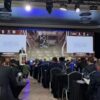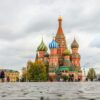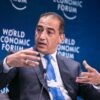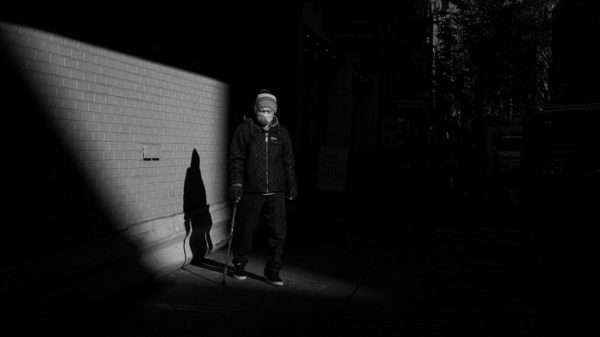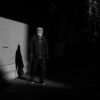As the bellwether Indian state of Uttar Pradesh, commonly known as UP, begins elections to choose a new government on Thursday, voting is being held in the key western districts that border the Indian capital, Delhi. The BBC’s Geeta Pandey in Meerut and Vikas Pandey in Delhi explain why a lot hinges on what happens in the region known as “western UP”.
On a cold winter day last week, hundreds of supporters of India’s governing Bharatiya Janata Party (BJP) crowded a small ground in a village in Meerut district in Uttar Pradesh.
Many stood outside on tractors which had ferried in supporters from nearby villages, adorned with the party’s saffron flags, waiting for Chief Minister Yogi Adityanath to arrive.
As the 49-year-old saffron-clad, shaven-headed Hindu monk-turned-politician walked to the stage, the crowd welcomed him by waving party flags and shouting “Long live Yogi ji” or just chanting his name repeatedly.
In a short 10-minute speech, Mr Adityanath who’s seeking a second term, criticised the opposition and listed his “government’s achievements”.
“Do I have your assurance that you would vote for my candidate?” he asked. The crowd responded in the affirmative.
As he left, his supporters told the BBC that they would vote for the BJP because the party had taken steps for farmers’ welfare and worked to improve the law and order situation in their area.
But there were plenty of signs that things are not going too well for the party here. Visitors to the rally who arrived wearing black jumpers or jackets were being asked to remove them – a local journalist explained it was because the organisers were afraid that someone might use it as a black flag and wave it at the chief minister.
In the past few weeks, there have been more than a dozen incidents in western UP where mud was thrown at BJP contestants, they were shown black flags or pelted with stones.


Why Uttar Pradesh matters?
- With an estimated 240 million people, UP is India’s most populous state. If it were a separate country, it would be the fifth-largest by population in the world, after China, India, the United States and Indonesia – and larger than Pakistan or Brazil.
- It sends the largest number of MPs – 80 – to India’s parliament and it is often said that the party that wins the state ruled the country.
- Several prime ministers, including India’s first PM Jawaharlal Nehru and the current PM Narendra Modi, have come from here.
- More than 150 million voters will cast their ballots in the seven-phased elections.
Read more here: The India election that will test Modi’s popularity

Meerut and surrounding districts in western Uttar Pradesh are voting on Thursday in the first of the seven-phased elections. The region had overwhelmingly voted for the BJP in the last polls in 2017, but this time they are on a sticky wicket.
The genesis of the anger towards the party here can be traced to another cold winter day exactly a year back when prominent farmer leader Rakesh Tikait, who comes from this region, issued a teary-eyed video, asking his followers to not abandon his protest site at Delhi’s border.
The farmers were protesting against three new laws introduced by Prime Minister Narendra Modi’s government and thousands had laid siege to the capital since November 2020. In the days leading up to the video, crowds at the Delhi-Uttar Pradesh border had started thinning.

Mr Tikait’s video went viral and soon, groups of young men, perched atop tractors and trucks, started coming at the protest site in big numbers. Already upset with Mr Modi’s party over the controversial farm laws – which farmers said would hurt their incomes – they were further angered by Mr Tikait’s video, considering it an insult to their leader.
The protests at the Ghaziabad border and at other spots on the outskirts of Delhi continued until November 2021 when Mr Modi rolled back the laws.
The timing of Mr Modi’s announcement was crucial, coming as it did just months before the state polls. Analysts said it was done as Mr Modi and his party feared losing support in the farmer-dominated western UP.
But the damage was done. Mr Tikait became the face of farmer-led anti-BJP protests in the state.
In 2017, the region gave more than 50 of the 70-odd seats in the 403-member assembly to the BJP. Their main poll plank was nationalism and consolidation of Hindu votes.
But there are questions if the BJP can repeat its performance. Mr Tikait has not allied with any political party but has dropped enough hints to his supporters to “not vote for those who insulted farmers”. He enjoys sizeable support in the region and it could seriously hurt the BJP’s prospects.
There is another factor that could dent the BJP’s chances – the resurgence of an almost forgotten regional party, the Rashtriya Lok Dal (RLD), led by Jayant Chaudhary, the LSE-educated grandson of former Indian PM Chaudhari Charan Singh. His father, Ajit Singh, also served as a cabinet minister in different federal governments.

In 2017, the RLD had lost major ground to the BJP in its stronghold of western UP as Jats – a farming community which plays a crucial role in the election arithmetic there – had abandoned the RLD.
The BJP’s strategy of consolidation of Jat Hindu voters had paid rich dividends. But this time, there are no guarantees that Jats, who played a major role in farm protests, will stay with the BJP.
Mr Chaudhary, who was seen actively supporting farmers during the protest, won waves of support when a video of him being attacked by the police went viral in October 2020.
He was injured when police used force to stop him from going to meet the family of a rape victim in Hathras district. The case had become political hot-potato as the police allegedly cremated the victim without the permission of her family. The police denied these allegations but opposition parties got a chance to attack Mr Adityanath’s government.
For the elections, Mr Chaudhary has tied up with Samajwadi Party’s (SP) Akhilesh Yadav, who has emerged as the main challenger to Mr Adityanath. While the RLD has a good support base among farmers, the SP has traditionally attracted voters from groups officially classified as “backward castes” and Muslims, who make up just over 26% of the voters in the western region.
If the three voting blocs come together, which experts say is likely to happen, the BJP is in a serious spot of bother.

You might also be interested in:
This video can not be played
To play this video you need to enable JavaScript in your browser.



